Llangynog is a village at the northern edge of Montgomeryshire, near the border with Denbighshire, which is situated at the confluence of the Afon Eirth and the Afon Tanat at the foot of the Berwyn mountain range. The village sits at the base of the Milltir Cerrig mountain pass, on the B4391 road, which runs between Llan Ffestiniog and Llanfyllin. The men of the community who fell during both World Wars are commemorated on a memorial plaque which is located inside Llangynog Memorial Hall.
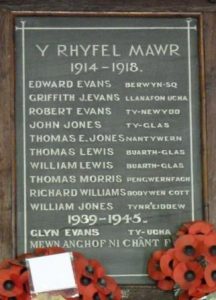
The Great War, 1914-1918
Aneurin Maldwyn Evans, Private, 29659, Royal Welsh Fusiliers. Aneurin was born in Manchester in 1891, the son of John and Elizabeth Evans. The family lived at 42, York Avenue, Manley Park, Manchester, but both of Aneurin’s parents were from Llangynog. Aneurin worked as a Salesman’s Assistant prior to enlisting into the 21st Battalion, Royal Welsh Fusiliers at Manchester on 17 November 1915, and was posted to Kinmel Park for training. On 11 July 1916 Aneurin embarked at Southampton for France, joining the 5th Infantry Base Depot at Rouen. He was initially destined for the 19th RWF, but on 21 July was posted to the 9th RWF, which was attached to 58 Brigade, 19th (Western) Division. Aneurin joined the battalion in a tented camp near Mametz Wood on the following day. On 23 July Aneurin saw his first taste of action, when the 9th RWF moved into the front line near High Wood, and suffered several days of almost constant German artillery fire. Aneurin served with the battalion on the Somme over the coming weeks, but by November had contracted dysentery, and was evacuated back to England on 19 December. It was almost seven months until he had recovered enough to be sent back out to France, embarking again at Southampton on 11 June 1917, and returning to the 5th Infantry Base Depot at Rouen. On 2 July 1917 Aneurin was posted to the 2nd Battalion, Royal Welsh Fusiliers, which was by then at Talmas, attached to 19 Brigade, 33rd Division, and was resting following several months of hard fighting at Arras. Just days later the Division was relieved, moving to Airaines, where it spent almost a month before taking over front-line positions on the Channel coast, near Bray Dunes, in the Nieuwpoort Sector. The intention was for the Division to launch an assault along the coast, but following the failure of the army to break out at Ypres, the Division was rushed to the city, before taking over positions facing Polygon Wood by 25 September, joining the Passchendaele offensive. Over the coming days the Division saw terrible fighting for the wood, and suffered terrible casualties. Aneurin had been killed near Polygon Wood on 26 September 1917. The remains of the 26-year-old were discovered buried on the battlefield in February 1921, and he was re-interred in Tyne Cot Cemetery, Belgium. Aneurin is not commemorated on the Llangynog war memorial.
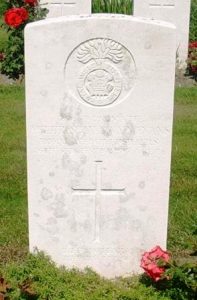
Edward Evans, Private, 202934, Royal Welsh Fusiliers. Edward was the son of William and Catherine Evans, of 1, Berwyn Square, Llangynog. He worked on the railways prior to the war. Edward enlisted into the 4th (Reserve) Battalion, Royal Welsh Fusiliers on 3 May 1915, and after completing his training was drafted to France, joining the 1/4th Battalion, Royal Welsh Fusiliers, which was attached to the 47th (2nd London) Division. His health began to break down soon after arriving at the front, and on 29 June 1917 Edward was discharged from the army as medically unfit. He returned home to Llangynog, where he died of tuberculosis on 3 January 1920. The 32-year-old is buried in St. Melangell Churchyard, Pennant Melangell.
Griffith John Evans, Private, 37967, Royal Welsh Fusiliers. Griffith was the son of Evan Evans and Grave Evans (nee Roberts), of Glanhafon Ucha, Penybontfawr. He was studying as a Clerk in Holy Orders at Cardiff University at the outbreak of war. Griffith enlisted at Cardiff into the army, and after completing his training, was drafted to France in the summer of 1916, joining the 13th Battalion, Royal Welsh Fusiliers. The battalion was attached to 113 Brigade, 38th (Welsh) Division, and Griffith probably joined it after the Division had pulled out of Mametz Wood, following its famous assault on July 1916. Following its relief, the Division took over a section of the front at Hébuterne before moving to the Ypres Salient, and taking over the Canal Bank sector at Boesinghe. The infantry battalions of the Division then began carrying out the normal pattern of rotation in the trenches, four days in the front, four in support and four in reserve, whilst also working on trench improvement, digging new trenches, and also carrying out regular patrols and trench raids. On 19 May 1917 the 13th RWF was moved from the front line to the rear areas, to train in preparation for the forthcoming Third Battle of Ypres. On 10 June the battalion moved back to L Camp at Poperinghe, and on the following day, relieved the 15th Welsh in the Canal Bank support line. On 12 June the 13th RWF moved forward, relieving the 10th Welsh in the front line, to begin a routine tour in the trenches. Griffith was killed by enemy artillery fire on 15 June 1917. The 25-year-old is buried in Essex Farm Cemetery, Belgium.
Robert Evans, Private, 14627, Welsh Regiment. Robert was the son of Robert and Jane Evans, of Ty-Newydd, Llangynog. In the late 1880’s he had moved to Merthyr Vale to find work in the coal mines of Aberfan, and married Hannah Maria Williams of Merthyr Vale in 1890. The couple lived at 32, Perthwgleision, Aberfan, where they raised six children. Robert enlisted at Caerphilly into the Welsh Regiment soon after the outbreak of war, and embarked for France on 3 December 1914, joining the 2nd Battalion, Welsh Regiment, which was in Flanders attached to 3 Brigade, 1st Division. The Division had suffered heavy casualties during the opening months of the war, taking part in the Battle of Mons and the subsequent retreat to the Marne, and then helped stop the Germans at the Battles of the Marne and Aisne, before the BEF moved to Ypres. The Division had then played a vital role in stopping the Germans capturing the important city, during the First Battle of Ypres, before wintering in Flanders. The following year saw the Division in action again at the Battle of Aubers, before moving South to Loos, and saw heavy fighting during the Battle of Loos, and the action at the Hohenzollern redoubt. During July 1916 the Division moved south, to join the great Somme offensive, and the 2nd Welsh reached Albert by 11 July, taking up billets in the town. On the morning of 15 July, the 2nd Welsh received orders to proceed via the recently captured Mametz Wood to the new front line, facing Bazentin Ridge, and took over positions near Bazentin-le-Petit Wood. On the following morning the battalion took part in its first assault on the Somme, but came under intense machine-gun fire, forcing the battalion to withdraw. On 19 July, after a torrid spell in the line, the 2nd Welsh was relieved and moved into reserve for a rest. Robert is recorded as being killed in action on 22 July 1916, while the 2nd Welsh was in reserve at Becourt Wood. On 5 April 1919 his body was recovered from a small group of graves on the battlefield, and the 52-year-old was re-interred in Quarry Cemetery, Montauban, France. Robert is the oldest man on the Llangynog war memorial. He is also commemorated at Aberfan.
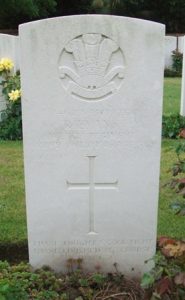
John Jones, Private, S/17888, Gordon Highlanders. John was the second son of John and Mary Jones, of Llwyn Onn, Penybontfawr. He was farming Tyglas farm, Llangynog, when he was called up for military service in 1916, and after attesting at Welshpool was drafted to France in April 1917. John was then posted to the 1st Battalion, Gordon Highlanders, which was at Arras attached to 76 Brigade, 3rd Division. John arrived in time to take part in the terrible fighting the Division endured at Monchy-le-Preux, during the First and Second Battles of the Scarpe, and at the Battle of Arleux and the Third Battle of the Scarpe, where the Division captured the village of Roeux. The Division then moved north to Ypres, taking part in the Battle of the Menin Road and the Battle of Polygon Wood. In November the Division moved south again, and fought at the Battle of Cambrai, remaining in the area over the winter. On 21 March 1918 the Division was among those hit hard following the launching of the German Spring Offensive, and saw heavy fighting as the line was forced to withdraw. The Division then moved north again, to the Fosse 10 sector at Loos, and became caught up in more fighting when the Germans launched the second phase of their offensive along the Lys Valley from 9 April, seeing heavy fighting over the coming weeks. By the middle of August, the Division had moved south again, back to the Arras sector, and when the Allies launched their great offensive on 21 August 1918, the Division advanced from positions near Ayette. Within days the Division had reached Hamelincourt, before capturing Écoust and Mory, and the 1st Gordon’s had a brief rest before re-joining the offensive near Havrincourt by the end of September. The Division then attacked the Hindenburg Line at Flesquières on 27 September, and within days the impregnable line had been broken, and the Allies were advancing towards the frontier. John was killed in action when his battalion attacked and captured the village of Romeries on 23 October 1918. The 27-year-old is buried in Romeries Communal Cemetery Extension, France.
Thomas Ellis Jones, Gunner, 215042, Royal Field Artillery. Thomas was the son of Edward and Mary Jones, of Nant-y-Wern, Penybontfawr. He worked as a farm labourer prior to the war. Thomas enlisted into the Royal Field Artillery at Dolgellau, and after completing his training, was posted to France to join B Battery, 76th Brigade, Royal Field Artillery, which was attached to the 16th (Irish) Division. On 19 January 1917 the brigade left the division and became an Army Brigade, moving to the Arras sector, to support the forthcoming Battle of Arras. During May 1917 the Battery moved north, to Kemmel, and the following month supported the Allied assault on Messines Ridge. Following the end of the battle, the Battery moved to Proven, and sent its guns for overhaul, before setting up new gun positions at Brielen, in order to support the forthcoming Third Battle of Ypres, which was launched on 31 July 1917, and supported the assault of the 38th (Welsh) Division on the Pilckem Ridge. The Battery remained at Ypres as the battle dragged on, covering whichever Divisions needed artillery support. On 4 October 1917 the Battery was in position at Navara Farm, supporting another infantry assault, when Thomas and another gunner were killed by German counter-battery fire. Thomas was 24-years-old when he was killed that day, and is buried in Cement House Cemetery, Belgium.
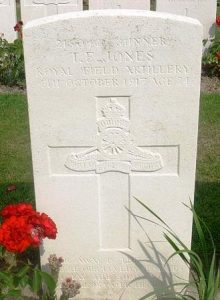
William Jones, Private, 55239, Royal Welsh Fusiliers. William was the son of Isaac and Margaret Jones, of Ivy Cottage, Llangynog. He worked as a porter at Llangynog Station for several years prior to enlisting into the Montgomeryshire Yeomanry at Llanfyllin, and was sent to Park Hall Camp, Oswestry for training. William was drafted to France in the winter of 1916-17, and was posted to the 2nd Battalion, Royal Welsh Fusiliers, which was attached to 19 Brigade, 33rd Division. The 2nd RWF had suffered heavy casualties during the Somme offensive in the summer of 1916, and during November received several drafts of reinforcements. On 8 December the now fully rebuilt battalion moved to new positions at Suzanne, between Bapaume and Péronne. The Division remained in this sector over the coming months, before being transferred to the Arras sector, and reached Henin by 13 April, before the Division took over a section of front line facing the Hindenburg Line. The infantry battalions of the division then began the usual routines of rotating between the front-line, support and reserve trenches and the 2nd RWF took over a position known as Tunnel Trench. On 23 April the 2nd RWF took part in a costly assault on the Hindenburg Line, suffering heavy casualties. The battered battalion then moved to a rest camp at Basseux to rebuild, and by 15 May moved back into the line in the Croisilles Sector. The Division then carried out several assaults against the Hindenburg Line, but could not breach it, so on 27 May 1917 a large-scale assault was carried out again, with the 2nd RWF in the thick of the action. Following the attack, the 2nd RWF moved out of the line for a rest, until moving back into the trenches at Moyenville on 19 June. Two weeks later the Division was relieved, moving to Airaines, where it spent almost a month before taking over front-line positions on the Channel coast, near Bray Dunes, in the Nieuwpoort Sector. The intention was for the Division to launch an assault along the coast, but following the failure of the army to break out at Ypres, the Division was rushed to the city, before taking over positions facing Polygon Wood by 25 September, joining the Passchendaele offensive. Over the coming days the Division saw terrible fighting for the wood, before being relieved, and moved to the Messines Sector the following month. William was badly wounded on 18 October, when he was hit in the head by a fragment of shrapnel whilst on a working party near Ypres, and he was invalided to the massive Casualty Clearing Station at Remy Sidings, where he died of his wounds on the following day, 19 October 1917. The 24-year-old is buried in Lijssenthoek Military Cemetery, Belgium.
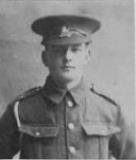
Richard Lewis, Private, 47252, King’s Own Scottish Borderers. Richard was born on 8 November 1882, the son of Richard and Margaret Lewis, of Berwyn Terrace, Llangynog. He married Ellen Jane Evans in 1909, and the couple lived at Ivy Cottage, Llangynog. Richard enlisted into the army on 16 June 1917, and was posted to France, initially joining the 2nd Battalion, Welsh Regiment. His health soon began to suffer, and he was transferred to the Labour Corps, before being transferred again to the 10th Battalion, King’s Own Scottish Borderers. The battalion was a Garrison Battalion, attached to 120 Brigade, 40th (Bantam) Division in the Lederzeele area, but by 13 July the title of Garrison was dropped and the battalion became a Service Battalion, taking part in the advance of the 40th Division towards the Belgian frontier from 21 August onwards. On 7 October 1918 Richard was discharged from the army as medically unfit, owing to chronic bronchitis, and he returned home to Llangynog. Richard returned to work at the Llangynog Quarry, but was seriously injured when he was crushed by a fall of stone. He was taken to the Oswestry Cottage Hospital, where he died as a combined result of his injuries and of tuberculosis, contracted on active service, on 8 December 1919. The 37-year-old was buried in St. Melangell Churchyard, Pennant Melangell. Two of his brothers, Thomas and William, had fallen during the war and are both commemorated on the Llangynog war memorial, however, for some reason Richard is not.
Thomas Lewis, Private, 203645, East Yorkshire Regiment. Thomas was the son of Richard and Margaret Lewis, of Berwyn Terrace, Llangynog. He was living with an Uncle, Griffith Lewis, at 26, Prospect Place, Treorchy prior to the war, and worked as a coal hauler. Thomas enlisted at Pentre into the army, and in the Spring of 1917 was posted to the 1/4th Battalion, East Yorkshire Regiment, which was in France attached to 150 Brigade, 50th (Northumbrian) Division. The Division wintered on the Somme, before moving north to Arras, taking part in the Arras Offensive of April 1917. Following its capture of the Wancourt Ridge, the Division saw further fighting at the Second Battle of the Scarpe, before being sent north to Ypres, taking part in the Second Battle of Passchendaele. After spending the winter in the Salient, the Division moved south, becoming caught up in the desperate fighting which followed the German Spring Offensive of 21 March 1918. Thomas must have been wounded during this period, as he was then sent to Southern Ireland to join a Garrison Battalion. He became ill towards the end of the war, and died of pneumonia on Bere Island, Cork on Armistice Day, 11 November 1918. The remains of the 28-year-old were brought home and he was buried in St. Melangell Churchyard, Pennant Melangell. One of his brothers, William, had been killed in France the previous year, while another, Richard, died in 1919. Only Thomas and William are commemorated on the Llangynog war memorial.
William Lewis, Private, 355347, Royal Welsh Fusiliers. William was the son of Richard and Margaret Lewis, of Berwyn Terrace, Llangynog. He married Catherine Anne Lewis prior to the war and the couple lived at Wildings, Sweeney Mountain, Llynclys. William enlisted into the 1st Battalion, Montgomeryshire Yeomanry at Welshpool on 3 May 1915. The battalion had mobilised at Welshpool in August 1914, as part of the South Wales Mounted Brigade, before moving via Hereford to Thetford, to join the 1st Mounted Division. On 4 March 1916 the 1st Mounted Division sailed for Egypt to join the EEF. On 4 March 1917 the battalion merged with the Welsh Horse Yeomanry to form the 25th (Montgomery & Welsh Horse Yeomanry) Battalion, Royal Welsh Fusiliers, as part of the newly formed 231 Brigade, 74th (Yeomanry) Division. The Division assembled in Egypt as part of the EEF, before crossing the Suez Canal into the Sinai, and saw its first major action during the Second Battle of Gaza. The battle was a failure, and the EEF was re-organised under a new commander, Sir Edmund Allenby, before launching the Third Battle of Gaza on the night of 31 October 1917. William was killed in action during the opening assault of the battle that day. The 33-year-old is buried in Beersheba War Cemetery, Israel. One of his brothers, Thomas, died the following year, while a third brother, Richard, died in 1919, both as a result of illness incurred during the war. Only Thomas and William are commemorated on the Llangynog war memorial.
Joseph Thompson Monkhouse, Captain, Durham Light Infantry. Joseph was born in Cowshill, County Durham in 1885, the son of Octavius Monkhouse, a hotel and quarry owner, and Mary Hannah Monkhouse (nee Thompson). Joseph was educated at Christ’s Hospital (Bluecoats School), London, before joining his father in the family quarrying business. He married Bessie Vickers Martindale at Durham in 1911, before the couple moved to Oswestry, where Joseph ran the Llangynog Stone Quarry, which his father had purchased. Joseph was a serving officer of the Territorial Army, having been commissioned into the 6th Battalion, Durham Light Infantry on 12 May 1908, and at the outbreak of war returned to Durham to join his battalion. The battalion mobilised at the Drill Hall, Bishop Auckland, attached to the Durham Light Infantry Brigade, Northumbrian Division, moving to Bolden Colliery, then to Ravensworth Park and Newcastle. On 17 April 1915 the 6th DLI landed at Boulogne, and the entire Northumbrian Division moved to the Ypres Salient, into reserve positions. Just days later, on 22 April 1915 the Germans launched a gas attack, the first of the war, against positions held by French Colonial Troops at St. Julien, and forced the Frenchmen to retreat in terror. A gap opened in the line, and the 1st Canadian Division was moved forward to plug it. The York and Durham Brigade of the Northumbrian Division was also ordered forward, and attempted to re-capture St. Julien on 24 April, but was beaten back. The Durham light Infantry Brigade was then ordered forward, moving into position on the following morning, 25 April, and remained in support of another attack on St Julien that day. On 26 April 1915 the Germans counter-attacked, and Joseph’s battalion came into action around Zevenkote and Zonnebeke. Joseph was killed in action that day, while the 6th DLI was attempting to advance and re-capture Hill 37. He was originally buried on the battlefield, but his grave was lost during further fighting, and the 29-year-old is commemorated on the Ypres (Menin Gate) Memorial, Belgium. Joseph is not commemorated on the Llangynog war memorial.
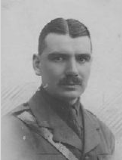

Thomas Morris, Private, 25278, Royal Welsh Fusiliers. Thomas was the son of David and Margaret Morris, of Llys Awel, Trawsfynydd. By 1901 his father had died, and the family was living at Pengern Fach, Llangynog. Thomas later returned to Trawsfynydd where he worked as a Joiner prior to the war. He enlisted at Ffestiniog into the 17th Battalion, Royal Welsh Fusiliers on 22 April 1915. The battalion had been raised at Llandudno before moving to Winchester in the summer of 1915, as part of 115 Brigade, 38th (Welsh) Division. The Division moved to France on 2 December 1915 and moved to the Nursery Sector near Fleurbaix for trench initiation alongside the Guards Division. The 17th RWF marched from Robecq on 26 December to go into the trenches alongside the 3rd Guards Brigade at Laventie for their first tour. By February the Division was in the line at Croix Barbee, with its battalions taking turns rotating in the front line or reserve. Towards the end of the month the Division moved to billets at Festubert and Le Touret, taking over a section of the line here. By the end of March, the Division moved again, taking over a sector at Gorre and a week later took over the Givenchy Village Line. On 12 May 1916 the 17th RWF was in the line at the Moated Grange when Thomas was killed. He was 21 years old and is buried in Rue-Du-Bacquerot No. 1 Military Cemetery, Laventie, France.
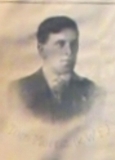
Edward Thomas, Gunner, 213712, Royal Field Artillery. Edward was the son of John and Sarah Thomas, of Cwmmur Ucha, Penybontfawr. He worked at Tyfos Farm, Llandrillo prior to enlisting at Dolgellau into the Royal Field Artillery in March 1917. After completing his training, Edward embarked for France, to join B Battery, 187th Brigade, Royal Field Artillery. The battery was attached to the 41st Division and, following heavy fighting during the Third Battle of Ypres, was selected as one of five British Divisions to be moved to Italy, as part of a reinforcement action taken by the Allies following a disastrous defeat of the Italian Army at Caporetto. The Division arrived at Mantua on 17 November 1917, where it held a part of the line on the River Piave, however, the crisis had passed and the Division was hurried back to the Western Front in early March 1918. The Division then moved to Flanders where it held the St. Eloi sector near Ypres that was, for once, relatively quiet. Edward was killed whilst his battery was carrying out operations at St. Eloi on 5 April 1918. The 29-year-old has no known grave and is commemorated on the Tyne Cot Memorial, Belgium. Edward is not commemorated on the Llangynog war memorial.
Richard Williams, Private, 28666, East Yorkshire Regiment. Richard was the son of Evan and Mary Williams, of Powis Cottage, Llangynog. By 1901 Richard had moved to Merthyr Tydfil to work as a coal miner, and by 1911 he was living at Colbren, near Neath. He enlisted at Neath into the army, and was drafted to France in the early months of 1917, joining the 11th Battalion, East Yorkshire Regiment, which was attached to 92 Brigade, 31st Division. The Division had moved to Egypt in December 1915, but in March 1916 moved to France, and took part in the Somme offensive. The Division wintered on the Somme, and spent a brief period out of the line resting and training before moving back into the front line near Coigneux on 19 February 1917. By 25 April the Division had moved north, into the Arras sector, and took part in the Third Battle of the Scarpe, where it helped in the capture of Oppy Wood. The Division then moved to the relatively quiet Mont St. Eloi Sector, where it remained for several months, carrying out a very successful trench raid on 8 November 1917. The Germans launched the first stage of their massive Spring Offensive along a section of the front running south from Croisilles to La Fère on 21 March 1918, and the 31st Division was rushed south, to bolster the stretched defences. On 23 March the Division took over a defensive line in front of Ervillers, and on the following day the Division came under artillery fire, before a strong German patrol attacked their lines. At dawn the following day, the Germans attacked in strength, and heavy fighting ensued, before the Division was forced to withdraw, to man a defensive line in front of Courcelles. Richard was killed in action here on 26 March 1918, when the Germans attacked again. The 37-year-old has no known grave and is commemorated on the Arras Memorial, France.
World War Two, 1939-1945
Glyn Evans, Able Seaman, D/JX362805, Royal Navy. Glyn was born on 15 January 1924, the son of Ann Jane Evans, of Berwyn Street, Llangynog. His mother married Robert Jones on 8 April 1933, and Glyn was raised with his stepfather and mother at Ty-Ucha, Llangynog. Glyn enlisted into the Royal Navy following the outbreak of war, and was posted aboard the M-class destroyer, HMS Mahratta. The destroyer had been launched in 1943, and during her sea trials, escorted the RMS Queen Mary across the Atlantic. She then began escort duties, taking part in several convoys and operations over the coming months. On 11 February 1944, Mahratta sailed from Loch Ewe, as part of the escort group guarding Convoy JW57. The convoy reached the Kola Inlet two weeks later, where the ships were spotted by a German long-range Focke-Wulf Condor aircraft. Several U-Boats were in the vicinity and were ordered to intercept the convoy, and a deadly game of cat and mouse followed. On 25 February 1944, Mahratta was torpedoed and sank by the German submarine U-990, off the coast of Norway, going down with the loss of 220 of her crew of 236. Glyn was 20-years-old when he died in the sinking that day, and is commemorated on the Plymouth Naval Memorial, Devon.